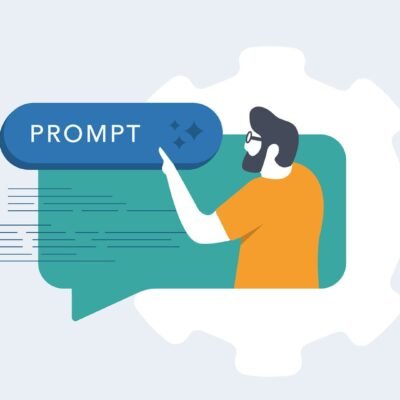Introduction
Artificial Intelligence (AI) is no longer a futuristic concept—it’s a competitive necessity. From startups to Fortune 500 companies, businesses are using AI to automate repetitive tasks, reduce human error, and operate 24/7 without fatigue.
By 2025, the AI market is projected to reach $190 billion, with 50% of enterprises spending more on AI than traditional automation (Gartner).
Companies using AI for automation report 40% higher productivity and 30% cost savings (McKinsey).
In this guide, you’ll learn:
- Key areas where AI drives automation (with real examples).
- Step-by-step implementation (even with limited tech skills).
- Top tools for marketing, sales, HR, and operations.
- How to avoid common pitfalls.
Let’s dive in.
1. Why AI is a Game-Changer for Business Automation
A. Speed & Accuracy Beyond Human Capability
- AI processes vast datasets in seconds (e.g., analyzing 10,000 invoices vs. a human team).
- Error reduction: AI-powered accounting tools like Zoho Books catch discrepancies with 99% accuracy.
B. 24/7 Operations Without Fatigue
- Chatbots (e.g., Drift, Zendesk Answer Bot) handle 80% of routine customer queries without human intervention.
- AI-driven inventory systems (e.g., Oracle NetSuite) auto-restock products based on real-time demand.
C. Data-Driven Decision Making
- Predictive analytics (e.g., Salesforce Einstein) forecasts sales trends, reducing guesswork.
- Dynamic pricing: Uber and Airbnb use AI to adjust prices in real time for maximum profit.
D. Cost Reduction & Scalability
- McDonald’s uses AI-powered drive-thrus to cut labor costs by 20%.
- JP Morgan’s COiN AI reviews 12,000 contracts in seconds (vs. 360,000 human hours).
2. Key Areas Where AI Can Automate Your Business
A. Customer Service Automation
Tools:
- Chatbots: Intercom, Freshchat (resolve FAQs, book appointments).
- Sentiment analysis: MonkeyLearn (detects customer emotions in feedback).
Case Study:
- Sephora’s AI chatbot handles millions of beauty consultations, increasing bookings by 11%.
B. Marketing & Sales Automation
Tools:
- Email personalization: HubSpot AI, Phrasee (writes high-converting subject lines).
- Lead scoring: Pipedrive, Gong.io (prioritizes high-intent prospects).
Case Study:
- Spotify’s AI curates personalized playlists, driving 30% more user engagement.
C. Operations & Supply Chain Automation
Tools:
- Inventory management: ClearMetal (AI-powered logistics optimization).
- Warehouse robots: Locus Robotics (cuts picking time by 50%).
Case Study:
- Amazon’s Kiva robots reduced operational costs by 20% in warehouses.
D. Finance & HR Automation
Tools:
- Expense tracking: Expensify (auto-scans receipts).
- AI recruiting: HireVue (analyzes video interviews for ideal candidates).
Case Study:
- Unilever uses AI to screen 250,000 job applicants/year, cutting hiring time by 75%.
3. How to Implement AI Automation (Step-by-Step)
Step 1: Identify Repetitive Tasks
Example tasks to automate:
- Data entry (e.g., invoices, CRM updates).
- Email responses (e.g., customer inquiries).
- Social media scheduling (e.g., Hootsuite AI).
Step 2: Choose the Right AI Tools
| Business Need | AI Tool | Cost |
| Chatbots | Drift | Starts at $50/month |
| Email Marketing | Mailchimp AI | Free plan available |
| HR Automation | BambooHR | Custom pricing |
Step 3: Start with a Pilot Project
- Example: Deploy a Zapier automation to sync Google Forms responses to a spreadsheet.
- Measure success: Track time saved (e.g., “Reduced data entry from 5 hours to 10 minutes”).
Step 4: Train Your Team
- Free AI courses: Google’s AI Fundamentals (Coursera).
- Internal workshops: Teach staff to collaborate with AI, not fear it.
Step 5: Scale & Optimize
- Use analytics (e.g., Google Analytics AI) to refine automation rules.
- Expand to new areas (e.g., AI-powered fraud detection in finance).
4. Challenges & How to Overcome Them
A. Data Privacy Concerns
- Solution: Use GDPR-compliant tools (e.g., OneTrust for AI governance).
B. High Initial Costs
- Solution: Start with low-cost/no-code tools (Zapier, ChatGPT for workflows).
C. Employee Resistance
- Solution: Highlight AI as an assistant (e.g., “AI handles grunt work so you focus on strategy”).
Conclusion
AI automation isn’t just for tech giants—small businesses save 10+ hours/week with the right tools.





